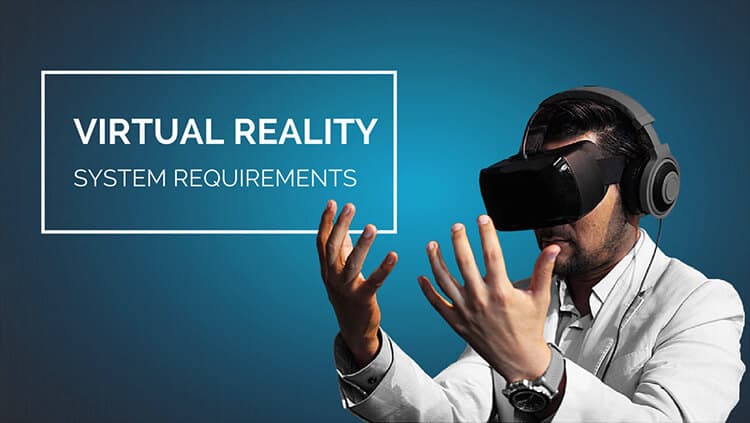
December 25, 2015
|Nikita Fedorov2015-12-25T16:10:492022-06-08T08:26:36System Requirements for Virtual Reality
Category:
Virtual reality technologies and their practical applications are becoming more and more popular. At the dawn of its development, the equipment was bulky, complex to install and the software setup procedure was quite complicated, not to mention a very limited number of people could get an access to it both technically and financially. However, not so long ago the situation has changed dramatically. In 2012 Oculus released their first breakthrough virtual reality head-mounted display and developer kit - the Oculus Rift.
This gear and software has opened the doors to a greater number of VR developers and enthusiasts at an affordable price, but more importantly it was becoming popular and well known amongst a wide number of users, the more questions were being asked whether home gaming computers are able to handle it. And although we’ve mentioned that VR technologies are more affordable nowadays, the answer is likely to be a bit disappointing for some users – their PCs might still not be ready to handle the demands of VR applications. So, the ultimate question is – what are the system requirements for custom PCs that would able to handle VR technologies such as the Oculus Rift?
Before we get too technical, it is worth to mention that along with Oculus, there are a number of other advanced VR developments that have been announced not so long ago, such as Samsung Gear VR (for Android smartphones), HTC Vive (co-production with Valve), Sony PlayStation VR (for the PlayStation), Windows Holographic and some others. All these projects are in different stages of development and not yet fully implemented to a final consumer products. So, we will focus on the Oculus Rift as it’s already available for developers and consumer version is just about to be launched in the first quarter of 2016. The HTC Vive is similarly scheduled for release in April of 2016.
How does VR work?
Virtual reality requires a high frame rate to be able to move smoothly and naturally within a virtual space. It is a core requirement not only for an enjoyable 3D experience itself, but also in order to prevent so called “simulation sickness”, which might cause dizziness, headaches or even nausea. The Oculus Rift has two Low Persistence OLED panels for each eye, with resolution of 1200×1080 pixels and with refresh rate 90 Hz. And this is a global refresh we are talking here – not scanning out in lines. Low persistence allows displaying an image for two milliseconds of each frame. The combination of the high refresh rate, global refresh and low persistence will prevent users to experience motion blurring or judder, which is usually experienced on a regular desktop monitor. As a result, the user experiences an almost tangible feeling of the virtual environment and objects in it. As we can see here, the resolution and the frame rate are demanding enough for any system and many normal PCs won’t come even close to such rate to be able to handle the VR application or game. Not to mention that resolution has to be considered as double – 1200x1080 per display = 2400x1080 pixels. Considering this, a comparison example of what computational power will be required to get a pleasurable experience, can be given as following: a traditional game with 1080p resolution at 60Hz frame rate requires about 124 million shaded pixels per second, whereas the Oculus Rift runs on dual-displays at 2400x1080 resolution at 90Hz frame rate that require about 233 million shaded pixels per second. But what makes it even more challenging is that at the default eye-target scale, the Rift’s rendering requirements go much higher: around 400 million shaded pixels per second. This means that by raw rendering requirements alone, a VR game or application will require approximately 3x (!) the GPU power of traditional 1080p gameplay.System requirements
Here are the minimum system requirements that Oculus has provided:- A dedicated NVIDIA GTX 600 or AMD Radeon HD 7000 series graphics card with HDMI or DVI-D output ports
- two USB 2.0 ports (at least one them is powered)
- Windows 7 or Windows 8 operating system
- Intel i5-4590 processor equivalent or greater
- NVIDIA GTX 970 / AMD 290 equivalent or greater
- 8GB+ RAM
- Compatible HDMI 1.3 video output
- 2 USB 3.0 ports
- Windows 7 SP1 or newer
Latest News

July 7, 2025
|Wesley Boyer2025-07-07T14:00:002025-06-30T11:44:42White PCs, Pink Gaming Builds, and the End of Boring Computers
You ever notice how most custom PCs and gaming PCs are just boring black boxes? Yeah, some people are totally fine with the standard industry
Read post
June 30, 2025
|Wesley Boyer2025-06-30T11:30:242025-07-09T04:35:58Custom PC Market Trends to Watch in 2025
Custom computers, whether gaming PC focused or workstation builds, are facing some pretty wild trends right now. We're dealing with non-existent GPUs, unrealistic MSRP pricing,
Read post